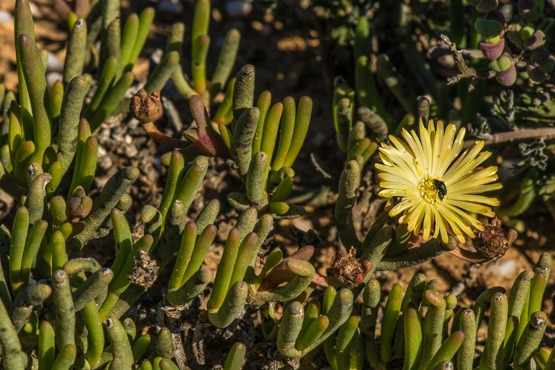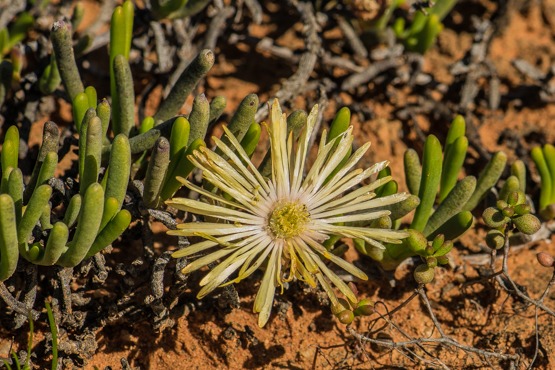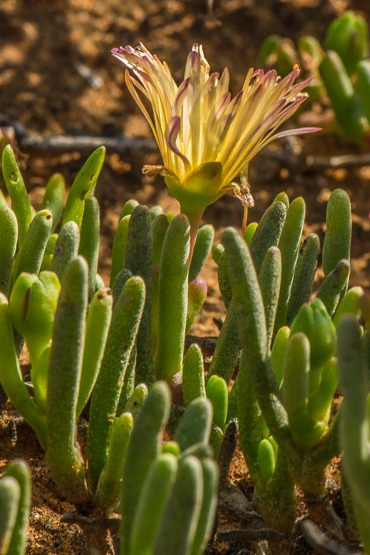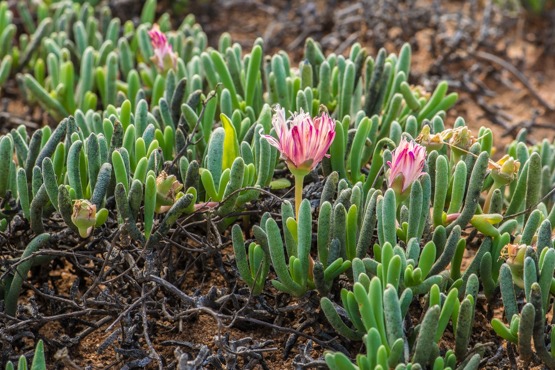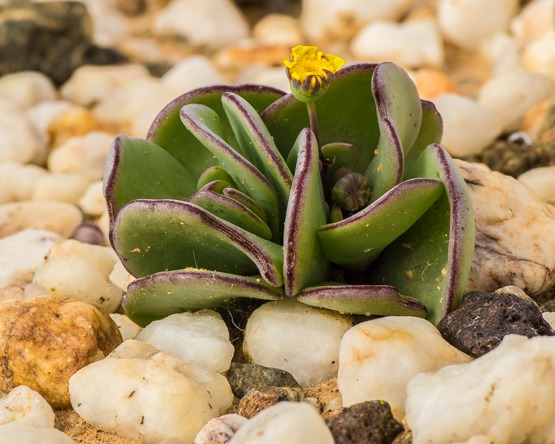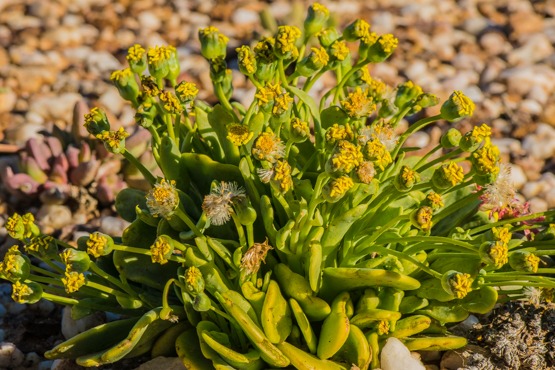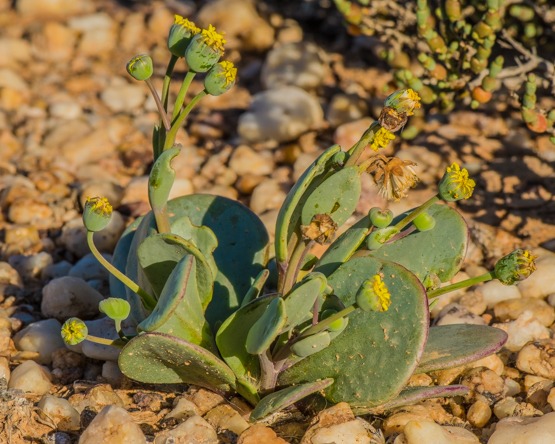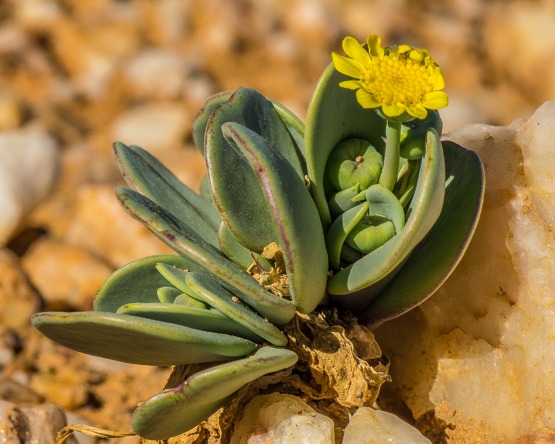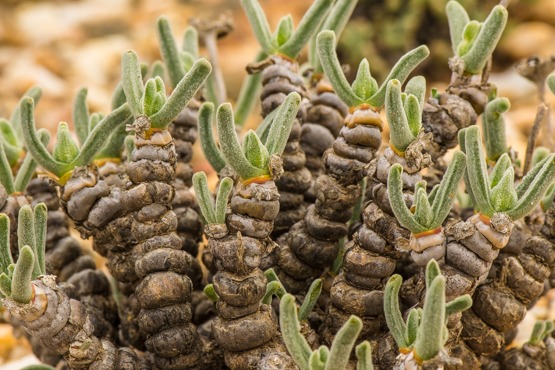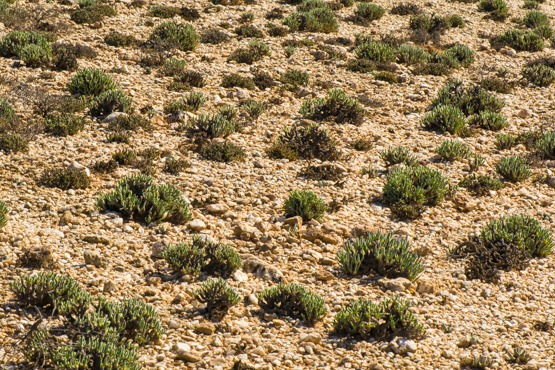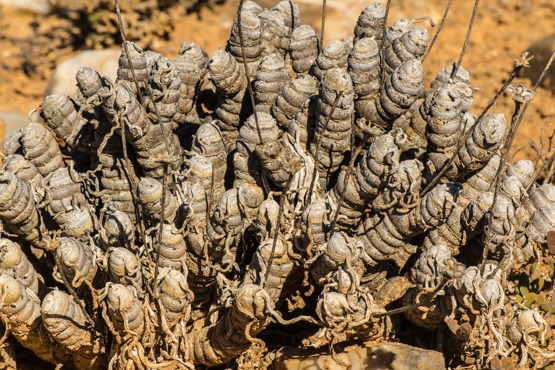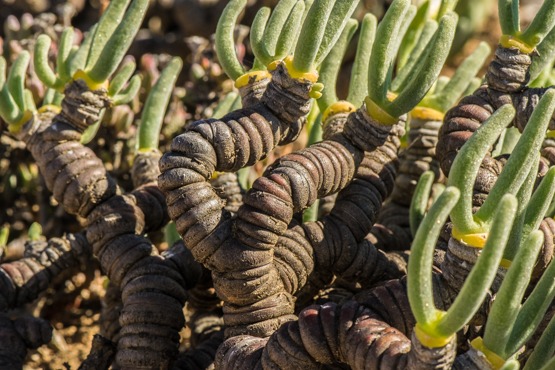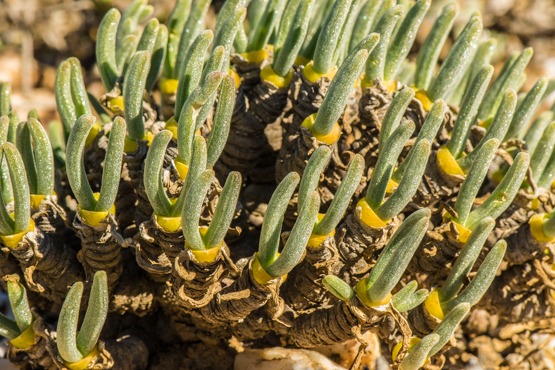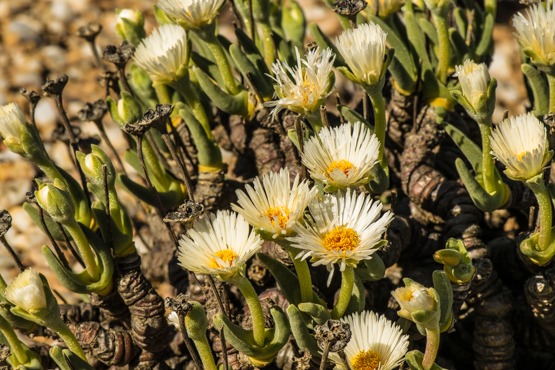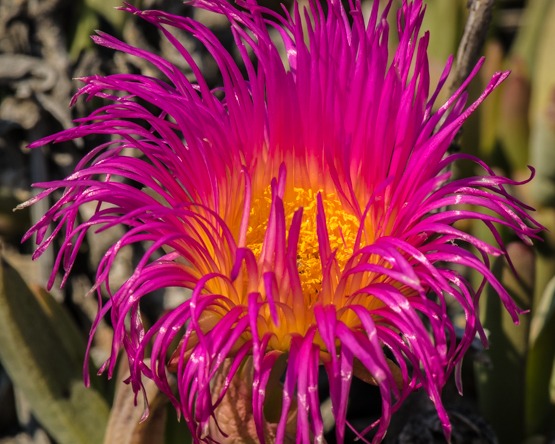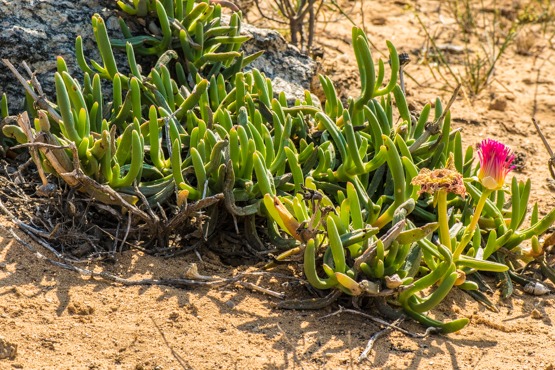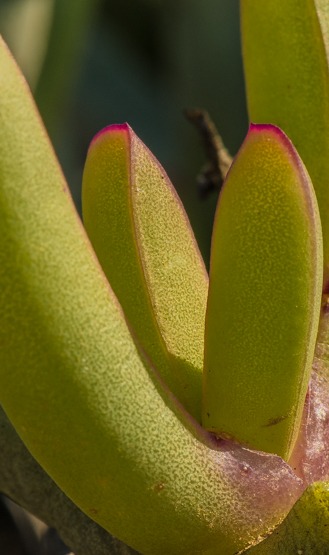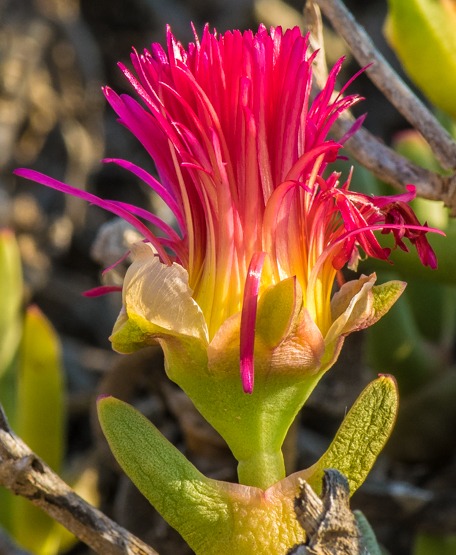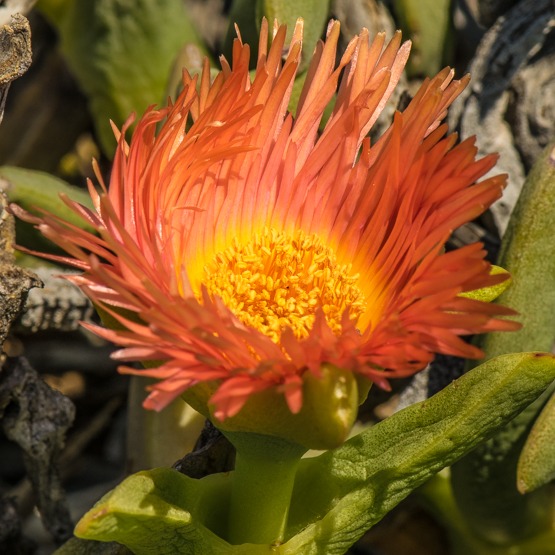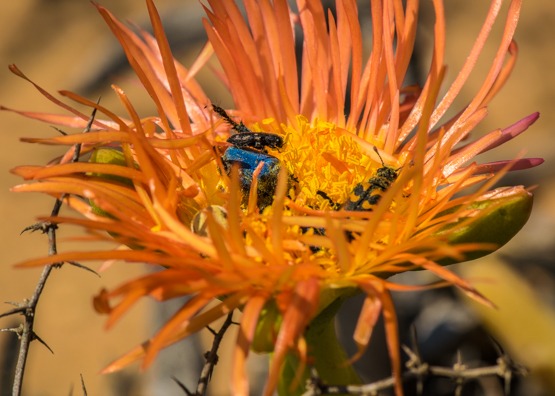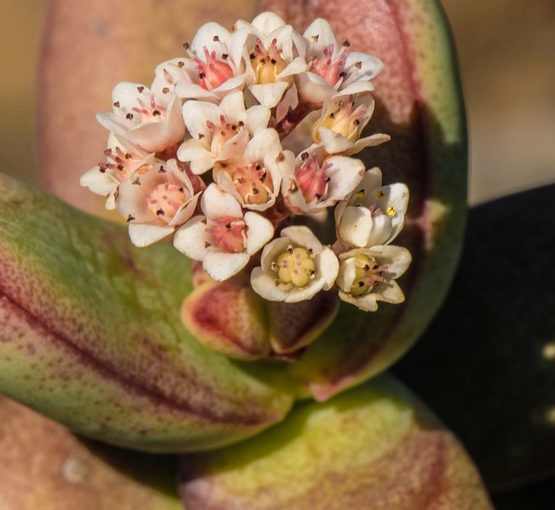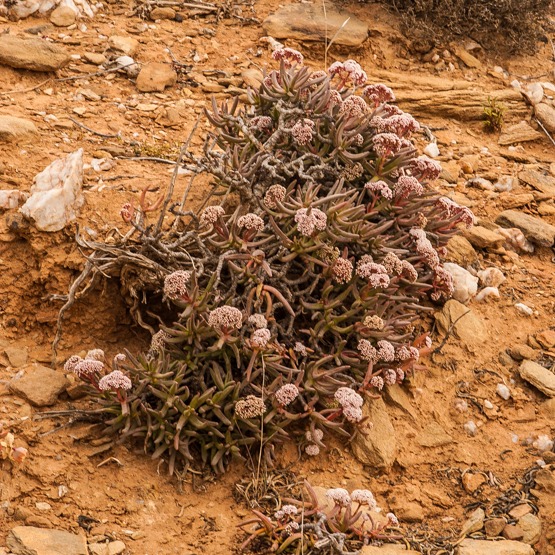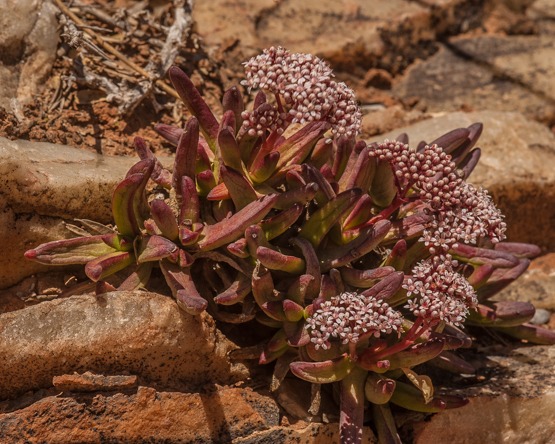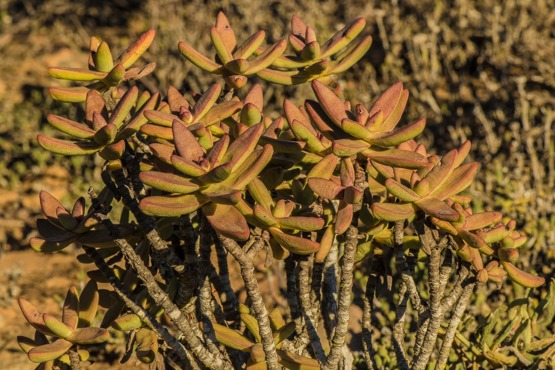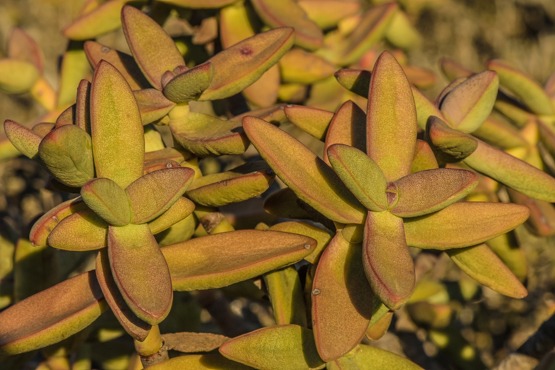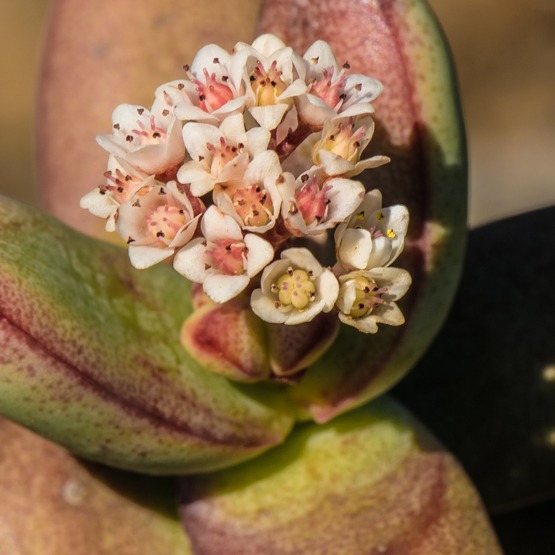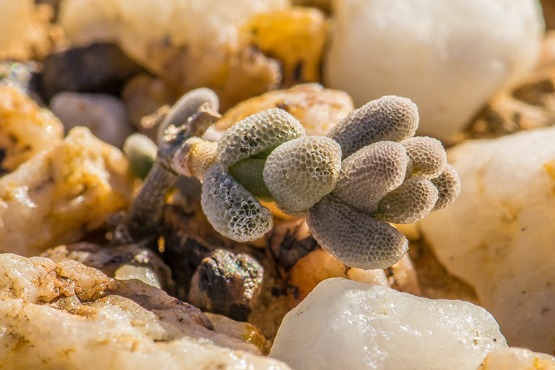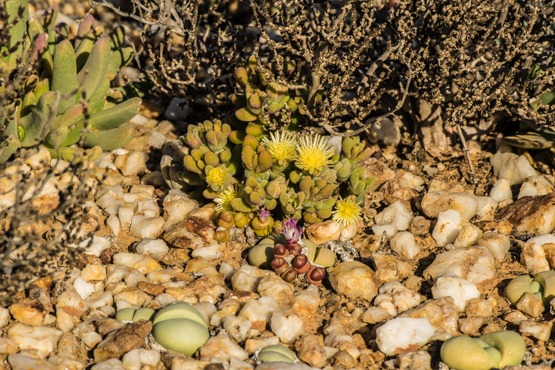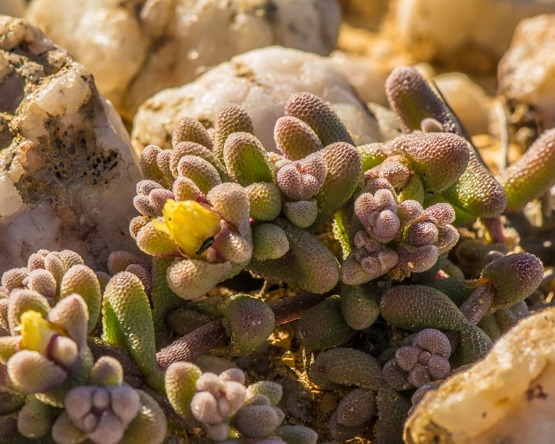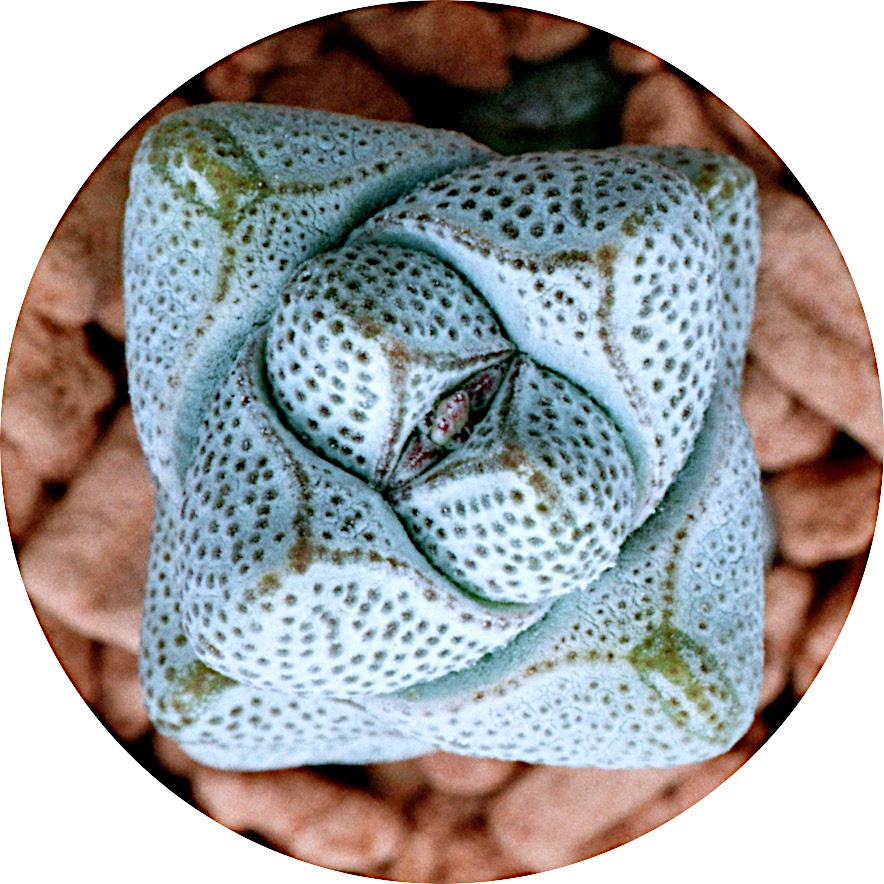
Guest column by Theo Heijnsdijk
Many Crassulas are beautiful mimicry plants. This one owes its name deceptor (= impostor) to the fact that the gray-green rosettes set with small dots look like small angular stones and in their habitat in southern Namibia and Namaqualand are hidden amongst the quartz stones that occur there.
The species was found in 1897 by Alston (of Avonia alstonii fame) and described by Schönland & Baker in 1902. Schönland later changed the name to Crassula deceptrix. This suggests that he considered cheating to be a trait that suits women more than men. But the real reason was that the word Crassula is feminine, and he thought (wrongly) that the species name had to be feminine as well. Later (1974) the name change was revoked.
Crassula deceptor is variable in shape and size. In nature, the rosettes are about 2.5 cm in diameter and up to about 8 cm tall. The plant in figure 1 has the same width.

Fig. 1: Crassula deceptor resembles a jagged piece of stone
The stems divide dichotomously and form a compact cluster over time.
For me in the Netherlands, the plant always blooms around October. As is the case with many Crassulas, this is not a spectacular but nevertheless graceful sight. The plants form branched flowering stems which protrude well above them and produce several tiny cream-green flowers which turn brown after flowering (fig. 2).
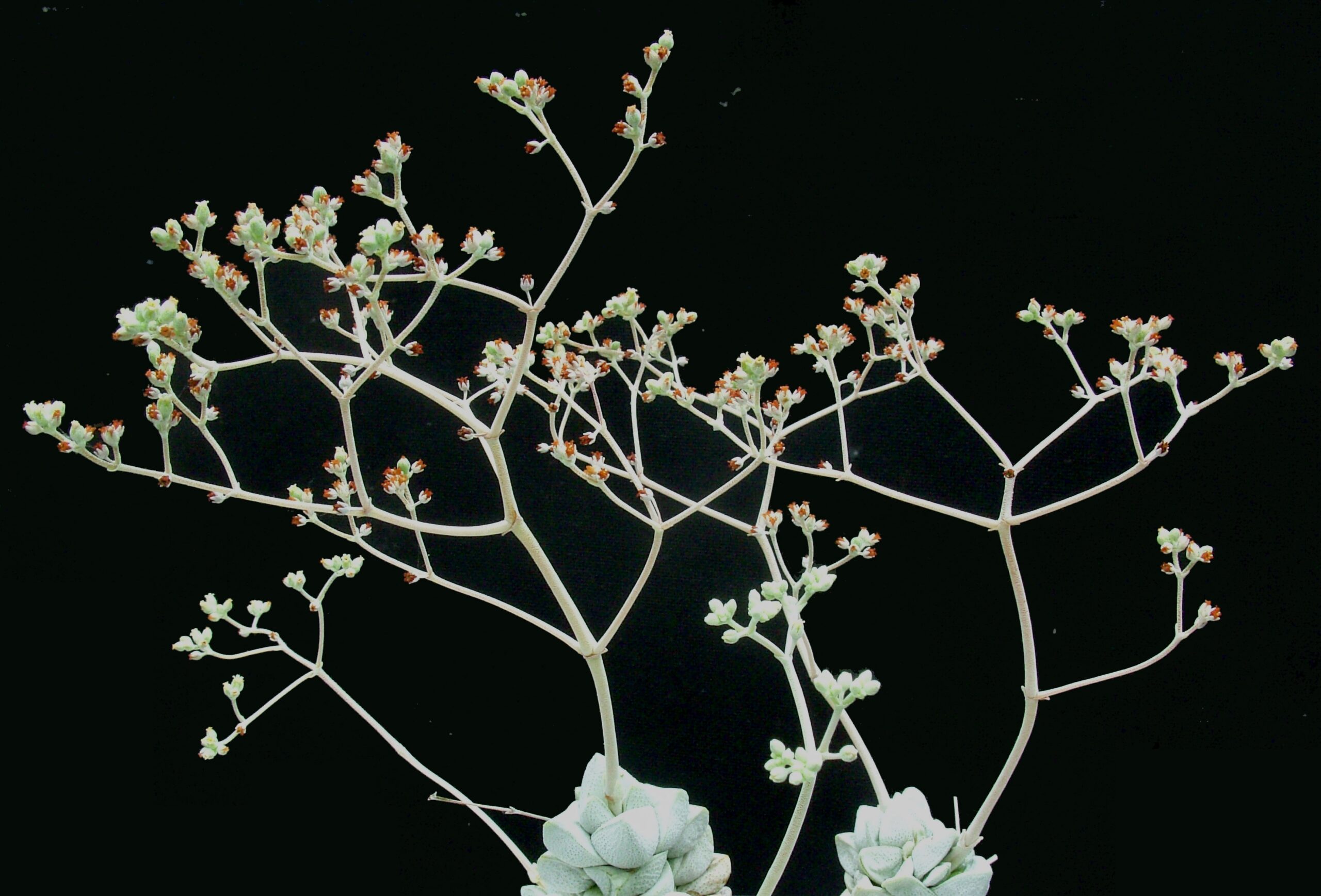 Fig. 2: Crassula deceptor in bloom
Fig. 2: Crassula deceptor in bloom
As for its cultivation: full sun, little water in summer and none in winter. With a less sunny location and/or a lot of water, they do not retain the compact shape. Be careful with water staying behind on the rosettes.
C. cornuta (figure 3), also described by Schönland, is nowadays considered to be synonymous with C. deceptor. Yet it clearly deviates from the standard form of the species. The leaves are longer, more pointed and much lighter in colour.
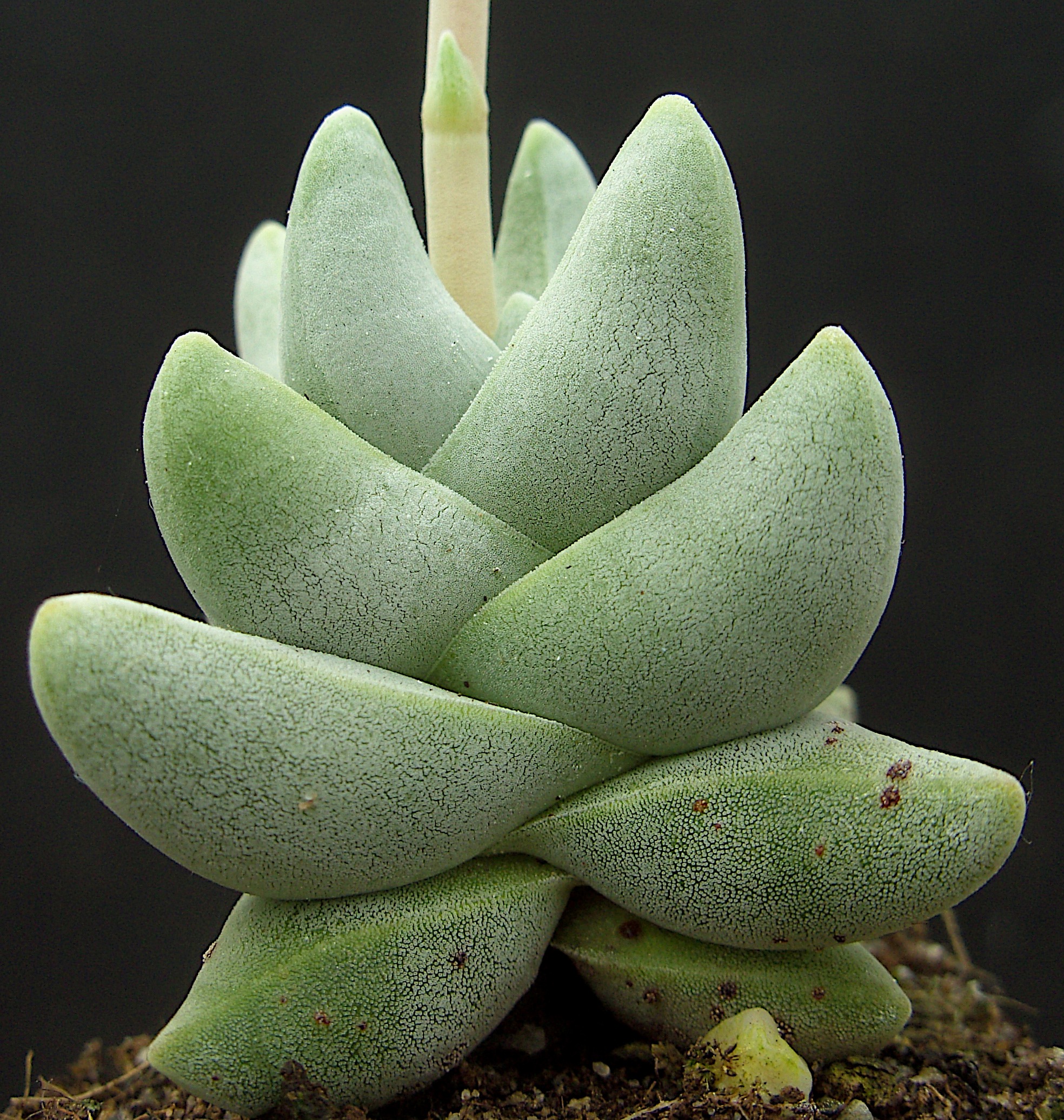 Fig 3.
Fig 3.
For the sake of completeness, it is worth mentioning that there are also quite a few hybrids in which C. deceptor is one of the parents. I have a hybrid of C. deceptor x C. susannae (fig. 4); the diameter of this plant is just 2 cm.

Fig 4
In ‘Crassula’ by Gordon Rowley, this cross is called ‘Dorothy’. He also mentions the following hybrids: ‘Frosty’ (C. deceptor x tecta); ‘Gandalf’ (C.deceptor x mesembryanthemopsis); ‘Moonglow’ (C. deceptor x perfoliata var. falcata); ‘Shogun’ (C. deceptor x hemisphaerica) and the multihybrid ‘Star Child’ (C. deceptor x ‘Starbust’), ‘Starbust’ being a hybrid of C. ausensis x pyramidalis.
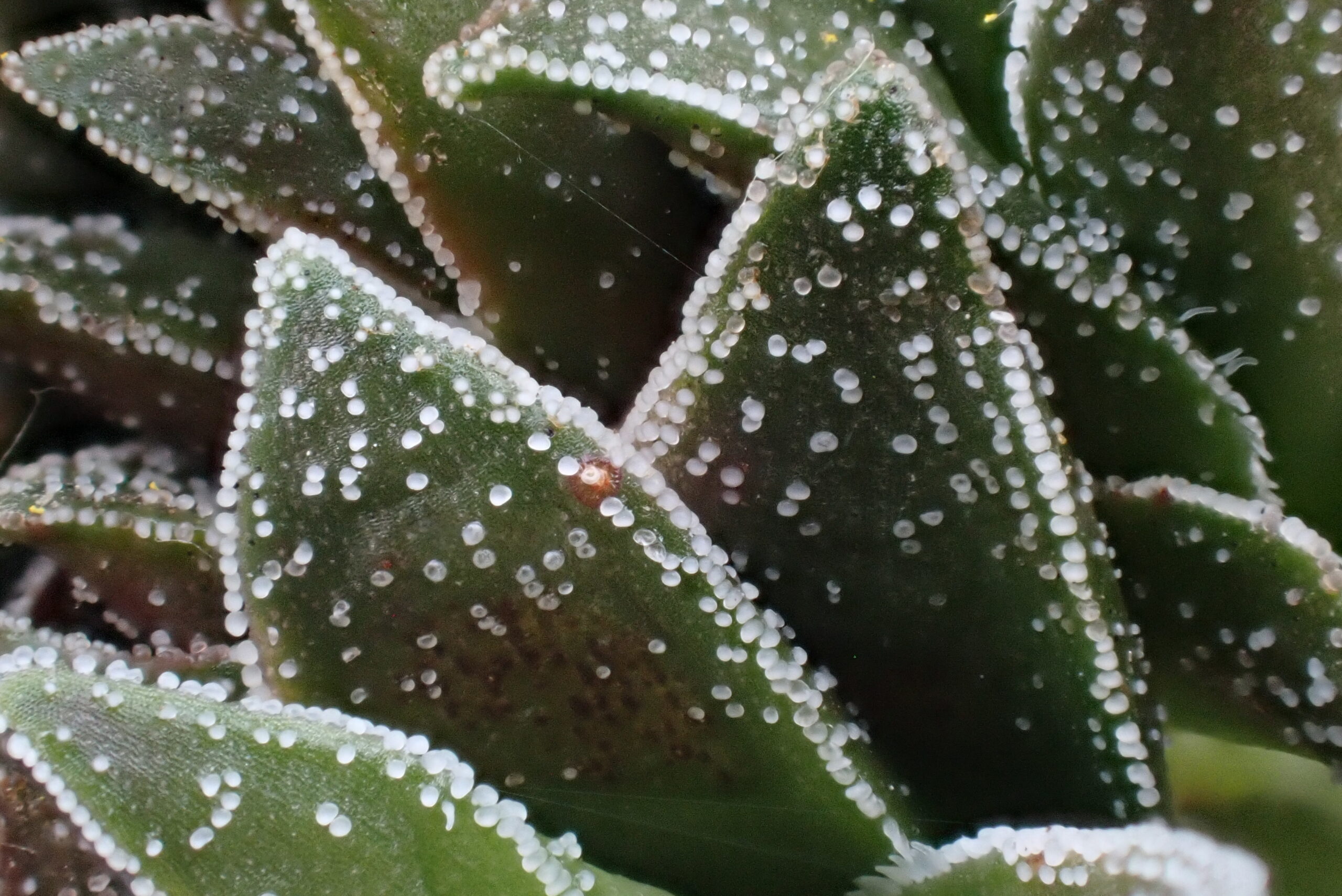
Fig. 5: Leaves of C. ‘Frosty’
Fig.6: Flowers of C. ‘Frosty’
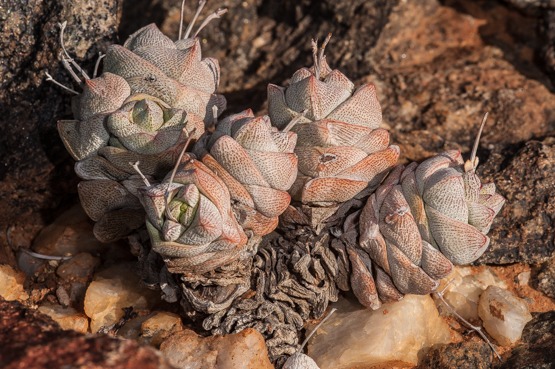
Fig. 7: C. deceptor in habitat
Literature:
B.K. Boom (1980), De Crassula’s van onze collecties, Succulenta 59 [8]: 176-179
Mia C. Karsten (1941), Zuid-Afrikaansche succulente reisherinneringen I, de botanische tuin te Stellenbosch (6), Succulenta 23 [6]: 65
Gordon Rowley (2003), Crassula, Cactus & Co
First published in Succulenta 89 [2]: febr. 2010. Translation from Dutch: FN.
For more habitat pictures and info, see
A jewel in the Crassula crown: C. deceptor
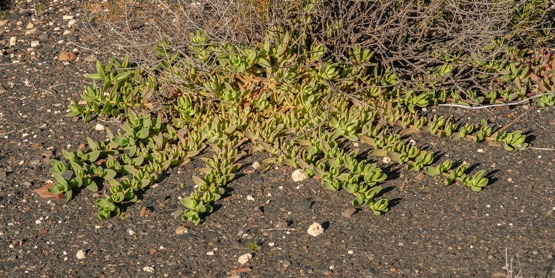
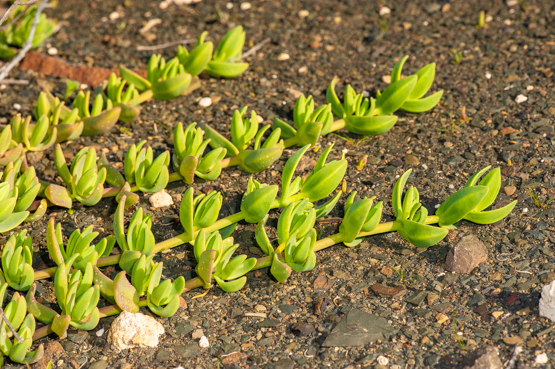
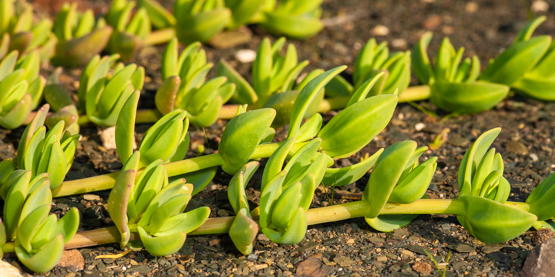
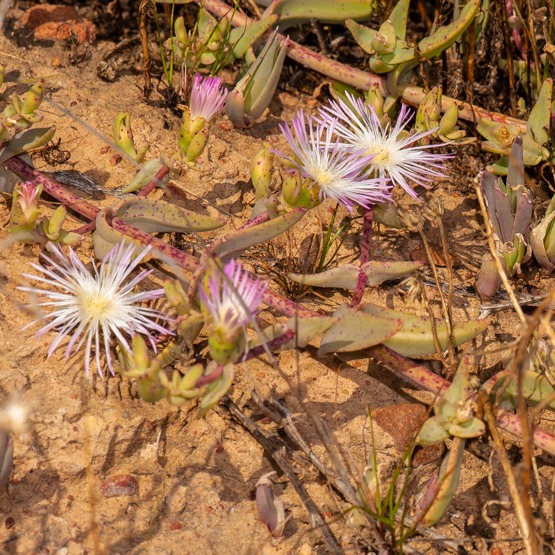
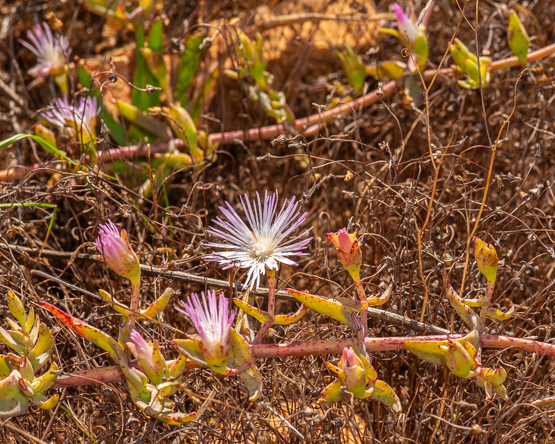
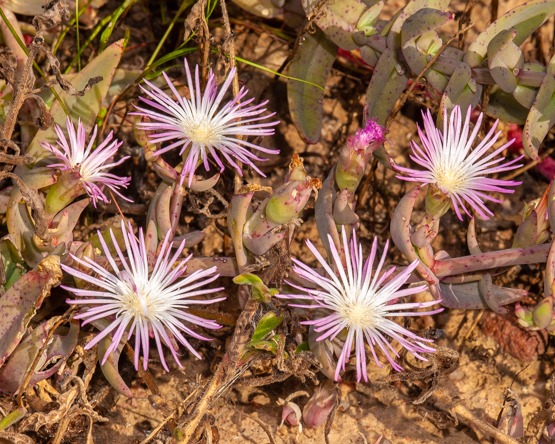
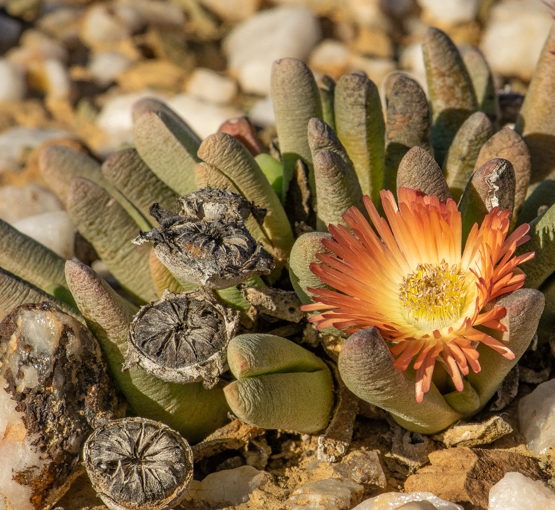
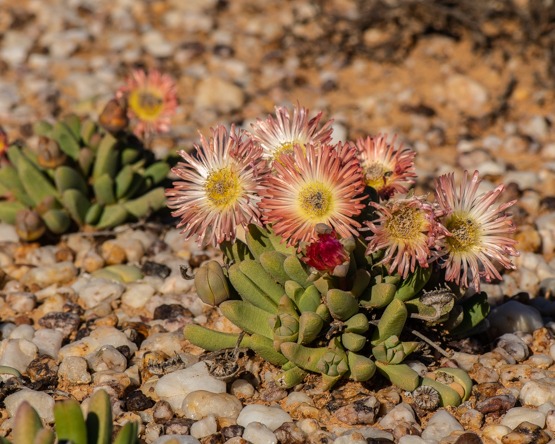
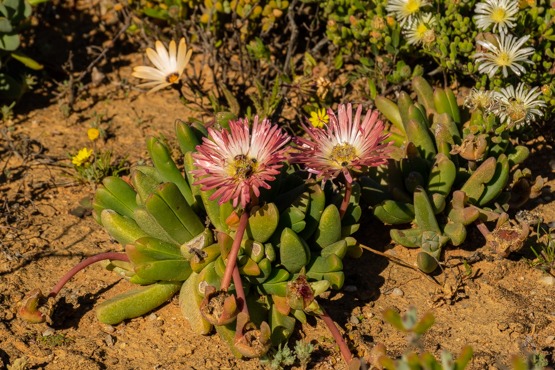
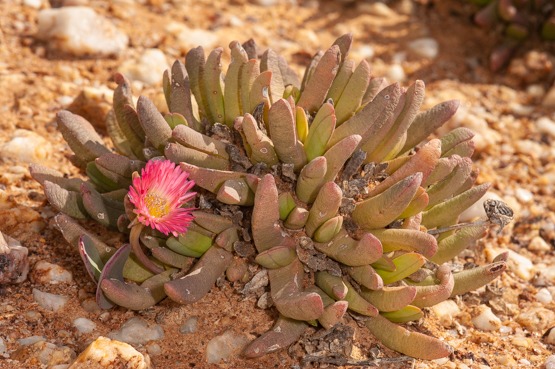
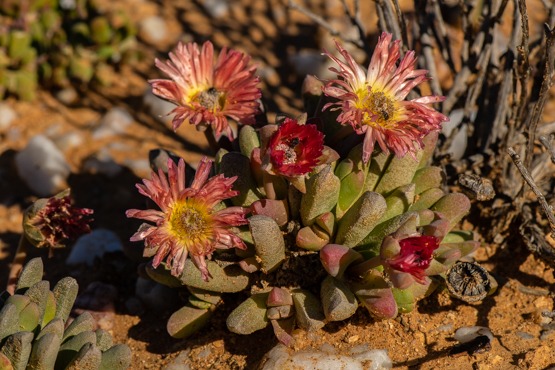
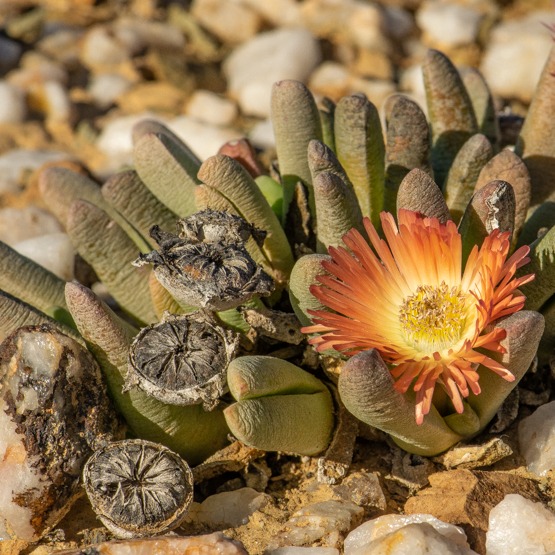
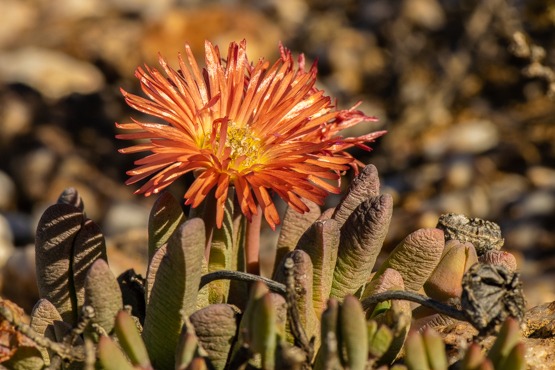
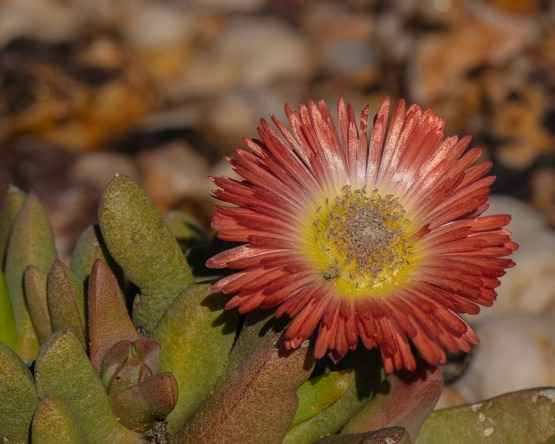
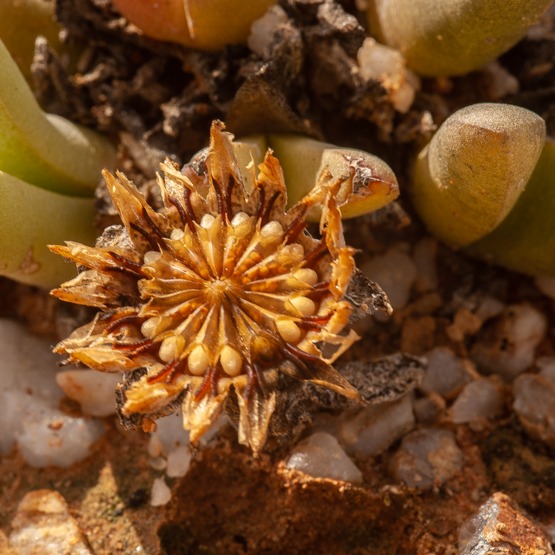
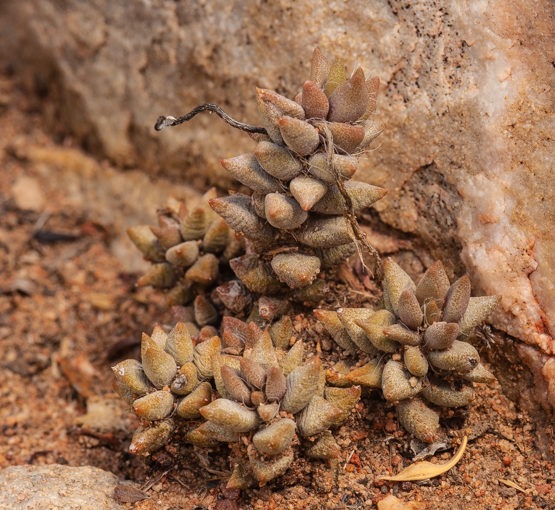
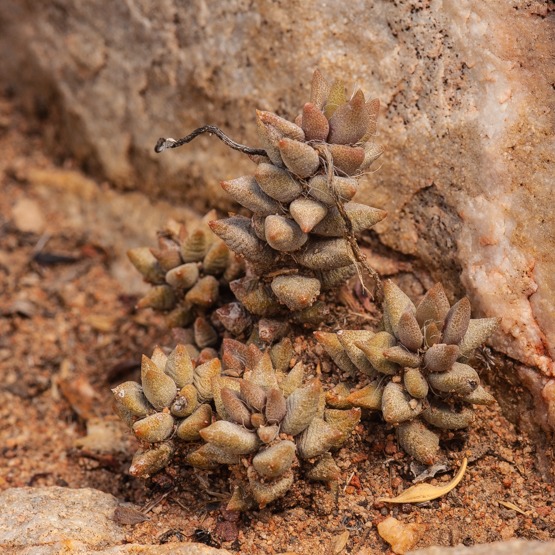
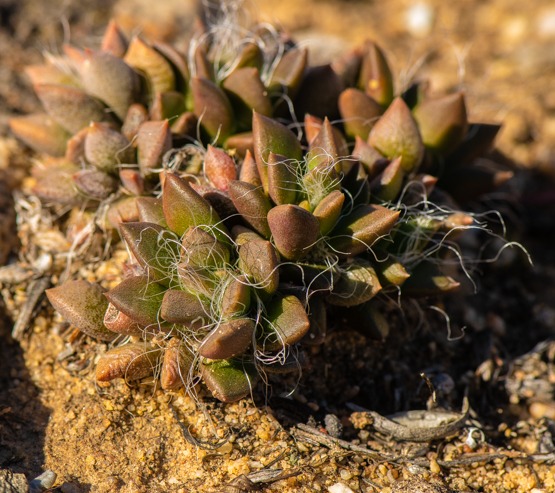
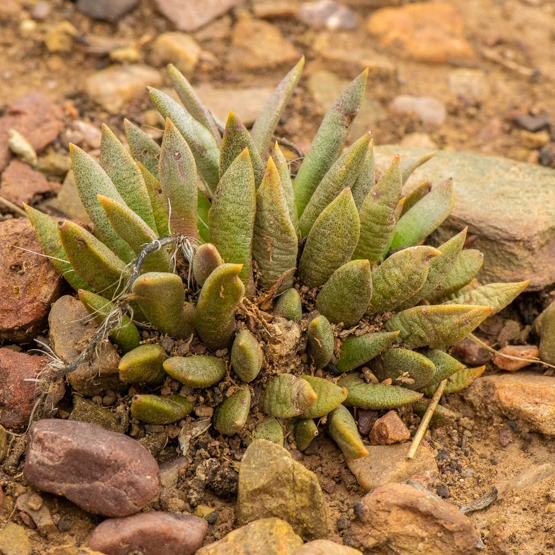
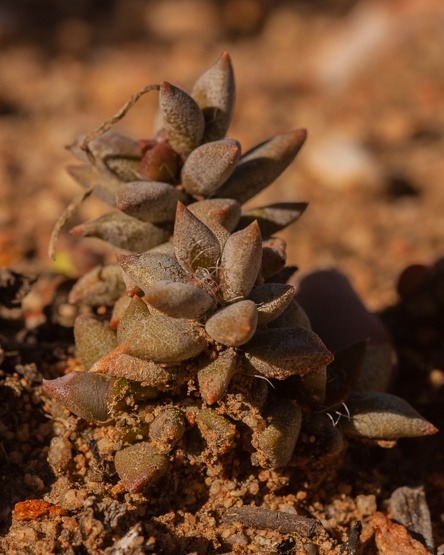
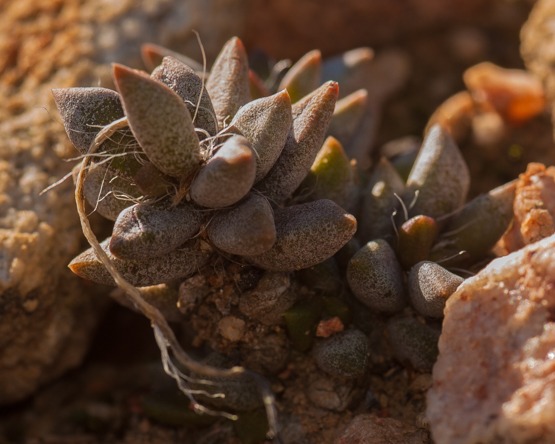
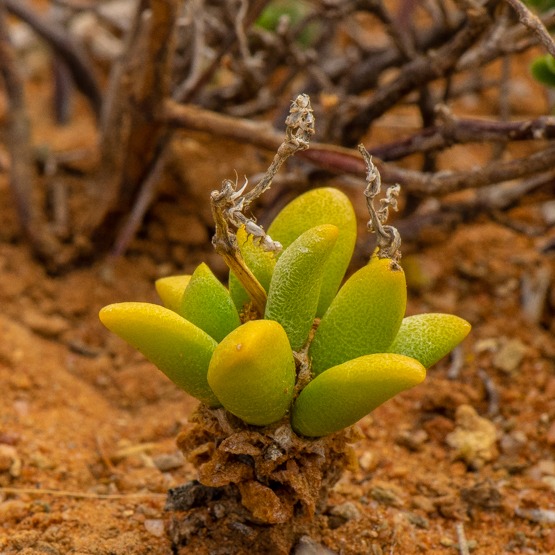
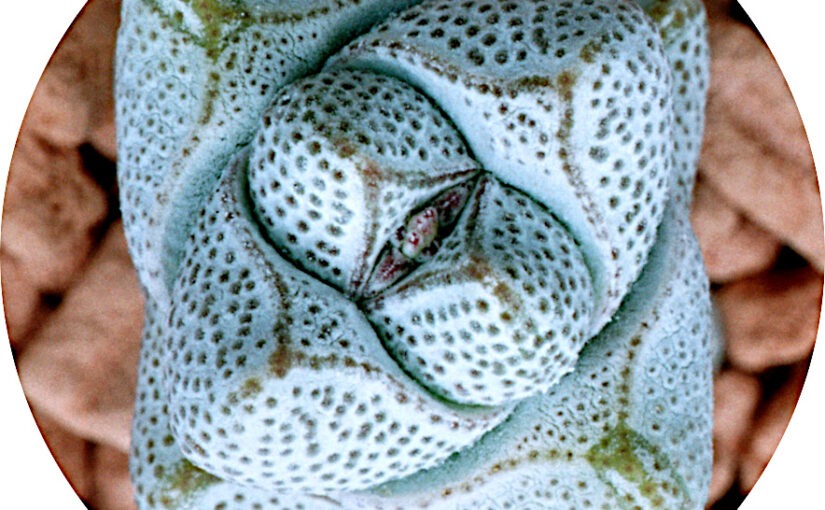

 Fig. 2: Crassula deceptor in bloom
Fig. 2: Crassula deceptor in bloom Fig 3.
Fig 3.



